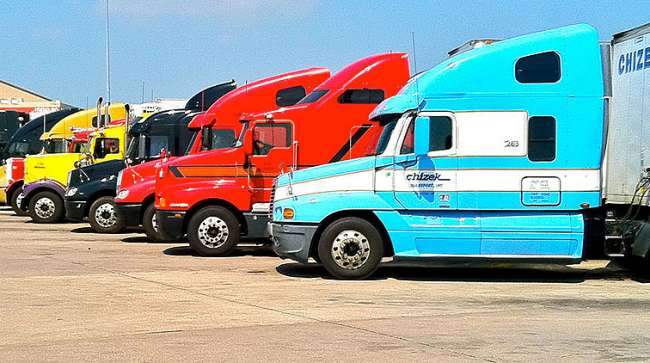Contract Rates Going Up in 2018 as Carriers Gain Strength

A confluence of historic trends and external events are impacting 2018 contract rate discussions that traditionally begin this time of year among carriers, shippers, logistics houses and consultants.
Indications are strong that average rates will increase, though executives involved in the negotiations prefer to discuss a range of percentages instead of specific numbers. Prospects for an increase range anywhere from 2% to 10%.
Executives agree that rates will rise, due largely to the industry’s shortage of drivers, estimated at 50,000 by American Trucking Associations Chief Economist Bob Costello. But there are a slew of other factors pushing rates higher. The shortage is influencing capacity rates that stood at 90% in the second quarter, as reported by Costello, and at 95% more recently, according to FTR Intel. The word is that capacity is closer to 100% as the holidays approach.
This crunch is hitting as the Dec. 18 deadline for drivers to adopt electronic logging devices for recording hours-of-service approaches, as well as the worry that the mandate will compel some drivers to leave the industry. On top of this, hurricanes Harvey and Irma tightened capacity and sent already robust spot market rates even higher. Plus, the economic picture points to increased demand, with a 4.1% jobless rate — the lowest in 17 years — and a solid 3% rise in GDP in the third quarter.
Andrew Lynch, president of Columbus, Ohio-based third party logistics firm Zipline, predicts contract rates could rise 6% to 7% but “trucks may not be available because of capacity problems.” That will mean more shipments in 2018 will be sent at spot rates and that could mean double digit increases in costs to shippers.

Lynch
Capacity near 100% means the trucking industry is in uncharted territory, he noted.
“It’s harder to obtain capacity. Small regional disruptions are now having a massive impact. Everything is exacerbated,” he said. “And when ELDs go live, that will only get worse.”
Zipline ranks No. 78 on the Transport Topics sector list of top freight brokerage firms in North America.
David Jackson, CEO of Knight-Swift Transportation Holdings, said during the company’s third-quarter conference call that it’s been clear that rates would be increasing after several flat years. Last spring a 3% to 4% rise was in the cards but now “5% plus” looks likely, he said.
Jackson added that raising driver pay is vital to addressing the shortage, especially since the average driver is in his mid-50s, and young people aren’t entering the industry fast enough.
“We need to see driver wages increase fairly significantly … if we want to be able to replace many of the baby boomers, that the industry has perhaps been too reliant on over the last 30 years,” Jackson said.
Lynch noted that increases in fleets’ contract rates could be used to boost driver pay.
Rachal Snider, vice president of customer supply chain at freight brokerage firm AFN, is advising shippers to prepare for a 2018 in which carriers hold greater authority in rate pricing. AFN ranks No. 32 on the TT list of top freight brokerage firms in North America.
Snider is advising shippers to gain flexibility by diversifying their lists of logistics firms and carriers, and is urging better communication with them.
“Shippers should include 3PLs and carriers in conversations regarding changes in volume or forecasts,” said Snider. “Bringing your 3PLs into the conversation as early as possible allows them to be better positioned to serve your needs and help you achieve your strategic goals.”

McGuigan
Frank McGuigan, president of logistics solutions firm Transplace, believes 2018 rates could see an average increase of 2% to 6% depending on factors including region of the country and weather events.
“We’ve been in a period of (rate) deflation for two years so carriers want to call back rates to increase revenues,” said McGuigan.
Transplace is advising its shipping clients to consider using dedicated fleets and intermodal services if rates get too high. Transplace ranked No. 49 on the Transport Topics Top 50 list of the largest logistics companies in North America.
Billy Hart, managing partner of Bluejay Advisors, a Jacksonville Beach, Fla.-based consultant to carriers with 100 to 500 trucks, said negotiations are active and predicts an average 2018 contract rate increase of 10%, though the numbers range from 5% to 25%. He noted that drivers are scarce and the “balance of power is shifting to the carrier.”
Hart is advising clients to be aggressive and strategic. “If the (shipper’s) business doesn’t fit you – walk away. If the pricing in the lane isn’t profitable – walk away,” he said.




